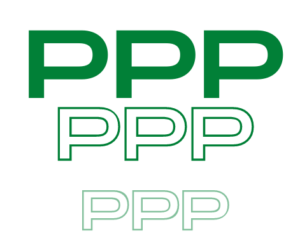Who Qualifies the new round of PPP money?
Is it you? Is it me? Could be!
If you file a business tax return and have not yet received any Paycheck Protection Program (PPP) monies.

**** Danger Will Robinson, Danger!****
March 31, 2021 is the deadline for this program, whether there is money left in the pot or not. Personally, I don’t believe the money will last that long.
Here is what your company need to be in the running for this new money:
- You file your taxes on Schedule C of your tax return.
- Businesses that file on Schedule C include independent contractors (often called 1099 folks),
- single-member LLCs,
- proprietorships,
- statutory employees.
- You file your taxes on Schedule F (ranchers and farmers).
- You are a partnership, but the partnership asks for and receives the money based on your and the other partners’ combined self-employment incomes, as adjusted.
- S corporation.
- C corporation.
- You are the only worker in the business
- if you have employees in the business, you qualify on both your ownership worker status and your employees’ W-2 status. (Yeah for you and your employee!)
The Forest for the trees

If you qualify, apply! It’s a tax-free infusion. we are talking money here people.
It’s called a loan, but it’s not. You have to repay loans. The PPP does not have to be repaid—it’s forgiven. (yay!)
Expenses paid with a PPP forgiven loan are tax deductible.
This new plan has a max calculation point of $100,000. This will be explained better below, as always each business entity has different calculations to get to the PPP Loan money eligible for your company.
Here’s how the PPP distributions works for different business entities:
Form 1040 Schedule C Business with No Employees
If you file your business taxes on Schedule C of your Form 1040, you calculate your first-draw PPP cash infusion money using the following three-step formula:
- Step 1. Go to either your 2019 or 2020 Schedule C and find your net profit on line 31. If the profit is more than $100,000, reduce it to $100,000.
- If you have no profit or show a loss, you are not eligible for PPP monies. (sorry!)
- Step 2. Divide the Step 1 profit by 12 to find your average monthly profit.
- Step 3. Multiply the Step 2 average monthly profit by 2.5.
Here’s the rub: your calculations have a maximum of $100,000. Even if your profit is above that.
Planning point. if you had a better year last year, (profit wise). We all know how bad the year that must not be named truly was. However, if you are one of the lucky ones, you can use last year’s numbers instead of 2019. If you have not filed her 2020 tax return yet, you should fill out the 2020 Schedule C and apply now.
Point of note:The statutory employee files a Schedule C and qualifies for the PPP just as all other Schedule C filers qualify.
Two Schedule Cs. If you have two Schedule C businesses with no employees, you can file for the PPP on both, but your maximum forgiveness in total may not exceed $20,833 ($100,000 ÷ 12 x 2.5).

Form 1040 Schedule F Business with No Employees
- Step 1. Find your 2019 or 2020 IRS Form 1040 Schedule F line 9 gross income, if this amount is over $100,000, reduce it to $100,000. (This line will get repetitive in the article.)
- If you are using 2020 and you have not yet filed a 2020 return, fill it out and compute the value.
- If this amount is zero or less, you are not eligible for a PPP loan.
- Step 2. Divide the amount from Step 1 by 12 to find your average monthly gross income
- Step 3. Multiply the average monthly gross income amount from Step 2 by 2.5.
So. This is basically like the top one if you bothered to read, Its ok, I skip to the part of an article the pertained to me too!
Partnership with No Employees
Individual partners do not qualify for the PPP monies. The PPP first draw for partnerships with no employees is at the partnership level and follows the three-step process below:
- Step 1. Add the net earnings from self-employment of the individual general partners in 2019 or 2020, as reported on IRS Form 1065 K-1, reduced by section 179 expense deductions claimed, unreimbursed partnership expenses claimed, and depletion claimed on oil and gas properties, multiplied by 0.9235.3 If the result exceeds $100,000 for any partner, reduce the result to $100,000 for that partner.
- Step 2. Divide the amount from Step 1 by 12.
- Step 3. Multiply the amount in Step 2 by 2.5 to find your PPP Loan amount.
Now for those of you who have dared to venture into a partnership know how difficult it can be… so sorry this math sounds awful!

S Corporation with Owner-Employee Only
- Step 1. Use the gross sum paid on box 1 of the W-2 for the owner /employee from either 2019 or 2020. (If over $100K, reduce. Remember this PPP plan has a max calculation of $100K)
- Step 2. Add any retirement contributions from your 1120-S, any state/local taxes and state unemployment tax to you amount from Step 1.
- Step 3. Divide the amount by 12.
- Step 4. Multiply the amount in Step 2 by 2.5 to find your PPP Loan amount.
What you need to know about your health insurance: The health insurance for an S-corp owner employee is included in the owner’s W-2, box 1. (So no Double dipping! C-Corps are different, that’s why insurance is added to their calculations)
Something to think about: Most S corporation owner-employees may take a lower salary to save on payroll taxes. this will lower your overall PPP Loan amount. (Sorry, double edged sword here.)

C Corporation with Owner-Employee Only
- Step 1. Find the gross wages paid to the owner-employee from box 1 of the W-2 for either 2019 or 2020. (If over $100K, reduce. Remember this PPP plan has a max calculation of $100K- see I told your repetitive!
- Step 2. Add any retirement contributions from your 1120-S, any state/local taxes and state unemployment tax to you amount from Step 1.
- Step 3. Add to Step 2 the employer-paid health, life, disability, vision, and dental insurance contributions.
- Step 4. Total the amounts from Step 3 and divide by 12.
- Step 5. Multiply the amount in Step 4 by 2.5 to find your PPP Loan Amount
Now for your employees
The rules that apply to the PPP Loan amount, is the same for businesses that report on Schedule C, Schedule F, Partnerships, SCorp, C-Corp that have employees.
Here are the nine steps you need to follow to include your employees in your PPP Loan amount as created by the SBA:
- Step 1. Use IRS Form 941 to get the figure needed for taxable Medicare wages for each of the four quarters.
- Step 2. Add any pre-tax employee contributions for health insurance or other fringe benefits.
- Step 3. Total Steps 1 and 2 for each employee and limit those amounts to no more than $100,000.
- Step 4. Add to the Step 3 total the employer contributions for employee group health, life, disability, vision, and dental insurance.
- BONUS!: HRA plans such as QSEHRAs, ICHRAs, and 105 HRA plans qualify as payroll additions for obtaining PPP funds.
- Step 5. Add the total the employer contributions to employee retirement plans to Step 4
- Step 6. Add to the running total any state/local taxes and state unemployment tax the employer has paid.
- Step 7. Using the grand total this is your average monthly payroll costs (AMPC), now divide the total by 12.
- Step 8. Multiply your AMPC by 2.5 and you have the employee portion of the PPP Loan amount.
- Step 9. Add the results from Step 8 to the result you get for the owner or owners, and you have the total PPP Loan amount.
As confusing as this all sounds, your bookkeeper, or accountant should be able to help you come up with these calculations. Shameless plug here: this is where it pays to pay for a bookkeeper!
For your convenience, included is the SBA Link to PPP Applications: SBA form 2483
For this and other articles, please check out our website





